Last Updated on March 3, 2024 by Colleen
Updated March 7, 2024. // Why is Lead Exposure So Dangerous? How Does Lead Get into Food? How did Lead Get into Cinnamon Applesauce? How Can You Protect Yourself and Your Family from Lead Exposure? How Can You Get Rid of Lead in your body? What Foods Can You Eat to Prevent Lead Uptake? Can you pass lead to your fetus?
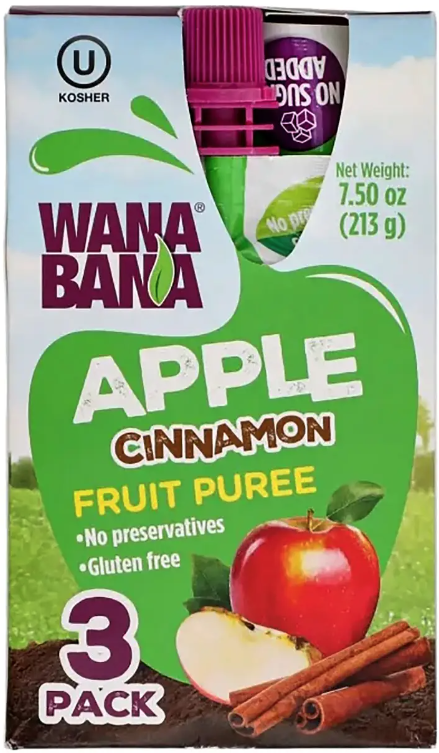
Is there lead contamination in your child’s cinnamon applesauce pouch? In your makeup? In grandma’s china plates?
The answer is “maybe.” Here’s how you can avoid lead and protect yourself and your family from contamination.
How Is Lead a Dangerous to Your Health?
Lead is a high-density metal that is toxic to our bodies but naturally part of our planet, so it is impossible to completely avoid it.
What makes it so problematic is that when it gets inside your body, it looks a lot like calcium. So, your body allows it to bind to proteins and move with ease through your internal membranes, even across the blood-brain barrier.
Elevated lead in your body is very difficult to remove and can cause health problems ranging from stomach pain to lowered IQ to aggression (see more below).
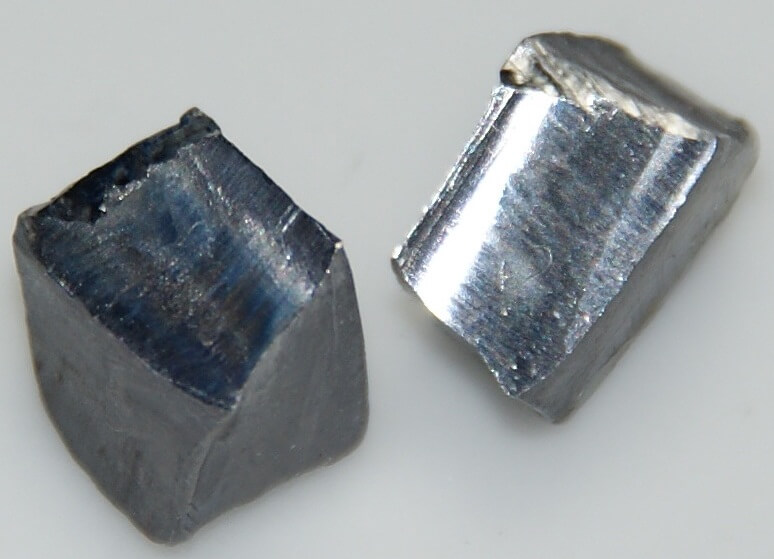
Lead-Tainted Cinnamon in Applesauce
The FDA issued safety alerts on Oct. 28, 2023 and Feb. 29, 2024 letting the public know about lead and chromium tainted cinnamon that got into the U.S. food supply (specific lot numbers are here). The situation was further investigated and exposed by the New York Times and The Examination. Here is what you need to know.

- A spice processing company (which has now disappeared) called Carlos Aguilera in Equador cut its cinnamon bark with lead chromate to increase the red color and decrease their cost. This resulted in extraordinarily high levels of lead and chromium in the cinnamon. The spice was sold through a series of brokers and imported into the U.S. without anyone testing it for heavy metals (any respectable spice company should be testing all their products for heavy metals and glyphosate).
- This tainted cinnamon was used in cinnamon-flavored applesauce that measured as high as 3000 PPM for lead (to put that in context, the FDA’s new proposal for baby food lead limits is 10PPB – 20PPB). The products were sold in pouches under the brand Wanabana or the store brands at Schnuck’s and Weis have been recalled and should not be eaten.
- These may have been purchase at those named-brand stores or the Dollar Store or on Amazon.
- We do not know how long those tainted products have been on the market. These have a long shelf life, so it could have extended to product sold in the years prior to 2023 as well.
- If you have these products in your house, squeeze the contents into the trash and throw away the pouch.
- If anyone you know has been eating these products, they need to have a doctor test their blood level for lead and chromium.
- Symptoms may include severe stomach cramping, burning or irritation in throat, vomiting, chills, lethargy, or colic.
- The level of lead in the bloodstream of children who ate these products averages six times higher than the average found in children in water pipe disaster in Flint, MI.
- According to the FDA, the pouches of applesauce tested had 2000 PPM – 5000 PPM of lead, far above the 0.02 PPM that is in the FDA’s new proposed limits for baby food (20PPB), simply extraordinary amounts.
In addition tho the FDA’s warnings, people should consider holding off on eating cinnamon temporarily. This may be the tip of the iceberg. We do not know if other companies used this cinnamon as well, and the companies themselves may not even know. There may be other recalls as the FDA traces this supply chain.
***UPDATE: On March 7, the FDA announced six more brands tested high for lead in their cinnamon. It’s unlikely this came from the same supplier as the levels were around 2 PPM-3 PPM, much lower than the applesauce contamination. But 3 PPM is also high and these products are being voluntarily recalled by the companies involved.
ALWAYS CHOOSE SPICE BRANDS CAREFULLY. Cheap spices can mean the processor has diluted the spice with a filler. As in the case of the recalled cinnamon products, that filler could contain heavy metals.
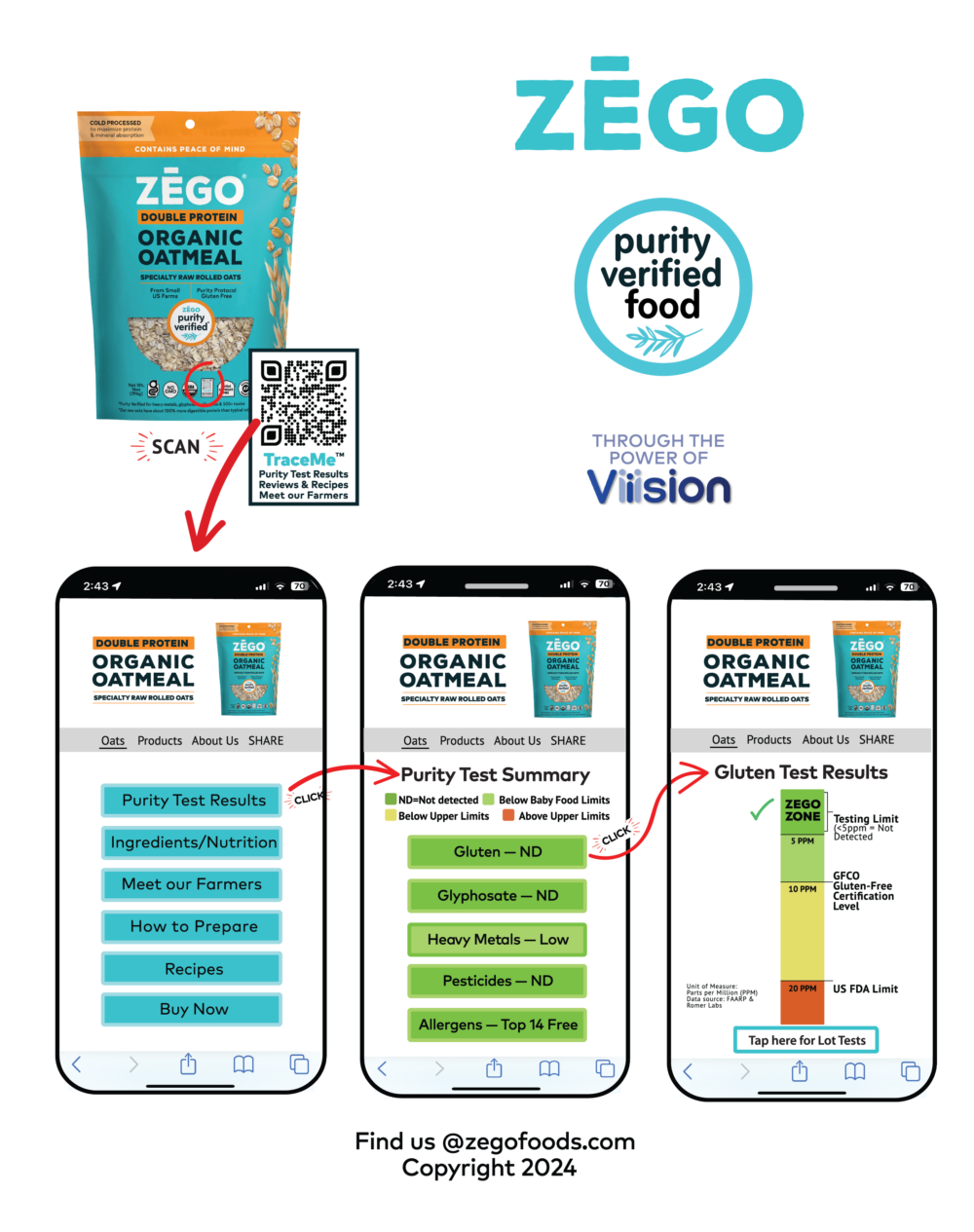
- First, if you are buying lower-priced products, choose the ones without spices. Add your own.
- Second-it takes just a few minutes- contact the brands (email or DM or website contact form) you want to purchase from and ask them if they have heavy metal testing on their products that you can see. .
All ZEGO products are purity tested for over 500 pesticides and heavy metals.
-
Organic Gluten-Free Muesli: Nut Free Cinnamon Twist (13oz)$9.99 — or subscribe and save 10%
-
Organic Gluten Free Muesli: Apple Cranberry (13oz)$9.99 — or subscribe and save 10%
Listen to the story behind the lead and chromium tainted cinnamon applesauce scandal in this episode of our Food Gossip series.
Colleen Kavanagh is the founder of ZEGO and advocate for supply chain toxin transparency. Follow her Food Gossip series on Instagram @zegofoods.
Does Buying Organic Food Protect You from Lead Exposure?
Unfortunately, choosing organic does not protect you from heavy metal contamination because organic standards do not address heavy metals. If you have cinnamon products in your home, reach out to the company and ask them if they know their product has been tested and is safe to eat.
At ZEGO, we test our products for heavy metals as part of our purity verification system, and we ask our suppliers to see their test results but many companies do not.
Is There Lead Hiding in Your Paint or Pantry? Probably.
Lead is part of our earth, so it is impossible to avoid all exposure. But you should try to avoid high exposure to lead in gasoline, mining, volcanic soil, and lead-based paint. Leaded paint is no longer used in houses in the U.S. but can be found in older buildings. It remains the #1 cause of lead poisoning in the U.S. If your home has not been painted since the 1970’s, you likely have lead paint that can chip off and get into your system through inhaling, touching, or eating the chips of their dust.
On a more personal level, you may be exposing yourself to high amounts of lead through products you use or consume every day.
- Makeup like lipstick (especially darker colors), eyeliner, and progressive hair dye,
- China plates and cups, particularly older, decorative china and lead-glazed pottery,
- Water pipes,
- Clay (including bentonite clay),
- Plant-based protein powders like pea and rice protein,
- Your body’s natural detox system can process small levels of lead exposure, and
- Nutrients in healthy food, like calcium, iron, and vitamin C, can prevent lead from staying in your body (see list of foods high in these nutrients below).
- Green powders for drinks,
- Meat substitutes with pea protein,
- Pea protein powder processed in China,
- Food and personal care products with carrageenan (think plant-based milks, toothpaste, conditioner),
- Spices, particularly ones that are red in color like turmeric, cumin, and cinnamon,
- Cocoa powder, and
- Traditional remedies like Bint al Dahab, used in Oman to treat constipation.
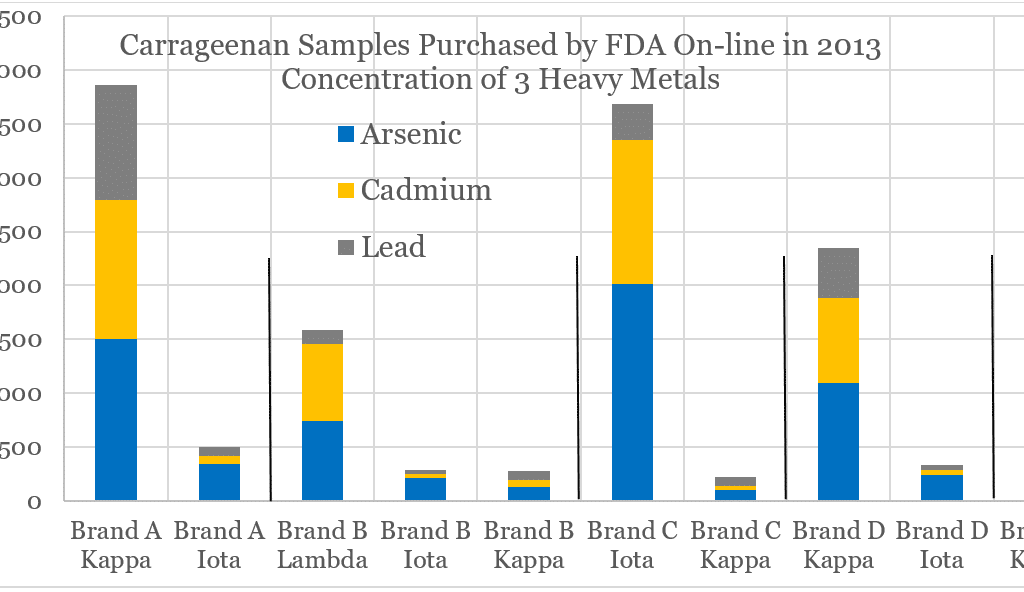
How ZEGO Protects You From Excess Lead Exposure
An integral part of our process in sourcing and creating ZEGO products is ensuring they are as pure as possible. And not just free from allergens and gluten but also by minimizing toxic heavy metal residue. Read more about our safety protocol and testing below.
Can Food Help You Detox From Lead?
Yes! You may be eating organic food to benefit your body and the earth. But unfortunately, it won’t help lessen your lead exposure. That’s because organic standards do not address toxic heavy metals like lead. Moreover, there likely is some tiny amount of lead in almost everything we consume.
But you have two things going in your favor. First is your body’s natural detox system. Second is that you can protect yourself by eating certain foods to help your body reject the naturally occurring lead you are exposed to. The nutrients in these foods (which are high in calcium, iron, and vitamin C) act as “natural antagonists” to lead and include:
- tomatoes
- berries
- onions and garlic
- wild blueberries
- grapes
- brown seaweed (Atlantic dulse)
- barley grass
- cilantro
- lemon
- probiotics
- green tea
- chlorella
- spirulina
- curry spices (cumin, turmeric, cayenne)
How Can You Make Sure Your Food Isn’t a Lead Risk?
We all have favorite brands of certain products in our kitchens. Consider taking these actions to protect yourself and assert your right to know what is in your food.
- PICK THE RIGHT FOODS FOR LITTLE ONES. Stay away from baby food with sweet potatoes and toddler snacks with pea protein and processed apples.
- CHOOSE SPICE BRANDS CAREFULLY. Cheap spices can mean the processor has diluted the spice with a filler. As in the case of the recalled cinnamon products, that filler could contain heavy metals. First, if you are buying lower-priced products, choose the ones without spices. Add your own. Second-it takes just a few minutes- contact the brands (email or DM or website contact form) you want to purchase from and ask them if they have heavy metal testing on their products that you can see.
- AVOID CERTAIN VEGAN SUBSTITUTES. Many meat and dairy substitutes have a significant amount of pea protein. And if the company can’t assure you they test for lead and have strict standards for it, steer clear.
- Buy safe chocolate or pea protein products. Ask if the company will share their lead results or you can’t find tests on them by 3rd parties, especially if they are a regular part of your diet. There are a number of reports to choose from like As You Sow for heavy metals in chocolate. But unfortunately, a previous, comprehensive report on over 130 by The Clean Label Project has been taken off the internet. (ZEGO Plant Protein is Prop 65 compliant, with our most recent tests showing no measurable amount of lead.)
- never use off-market cannabis or cigarette products. They are more likely to have elevated lead levels. If you want to indulge, know that legal cannabis products sold in California, for example, have to meet strict purity standards and will have a purity panel on them showing they are below the state’s strict lead limits. Even still, we hear from people in the industry that these reports may not be reliable.
- LIMIT IMPORTED RED WINE AND VINEGAR. Don’t drink more than a bottle of imported red a day to limit your lead exposure, and because it’s really not a habit of highly successful people. Take special care with balsamic vinegar as well, as the lead can be further concentrated there (though you consume much less of it than wine).
- Ask your favorite food companies if they have purity standards for lead. And ask them to share their lead testing with you or to tell you if they are “California Prop 65 compliant.” Stick with the ones that will share their test data or ones that 3rd parties have tested (see bullet #3).
Can Lead Exposure Contribute to Miscarriage, Autism, and Fetal Abnormalities?
The threat of lead exposure for babies starts much earlier than conception. In fact, it starts with the mom’s early exposure to lead during HER childhood through the food she ate and the home and environment in which she lived.
The lead you accumulate from various exposures is stored in your bones for up to 30 years. It waits for just the right moment to release and travel around your body.
During pregnancy specifically, a woman’s body will release lead that has been stored in her bones that the fetus then absorbs. In fact, being pregnant is the most significant event that will pull lead toxicity OUT of a female’s body
Lead can cause fetal abnormalities and miscarriage. And, first born children absorb more of their mother’s lead than subsequent children do. This is a contributor to the higher rates of autism seen if first born children.
It’s a terrible lesson, showing that what we eat and how we live can affect future generations. And, it starts before we are even old enough to understand what that means.
Could Your Symptoms Be Lead Poisoning?
Acute lead exposure (meaning a high level in a short period of time) can cause vomiting, brain swelling, anger, and seizures. Luckily, most of us are not exposed to acute levels of lead. We are more concerned about lead’s invisible threat at low levels of exposure over our lifetime.
You are right to be concerned about this because lead accumulates in your body. And, you may have no idea that the symptoms you are experiencing–gastrointestinal distress, depression, nausea, and fatigue–are actually caused by lead toxicity. You can ask your doctor to can run a lead test for you but it will only show acute levels, not lower levels that can still be problematic.
Here is a long list of concerning symptoms that we often blame other causes for but could be caused by lead poisoning.
- dementia
- joint pain
- high blood pressure
- hallucinations
- urinary tract infections
- hair loss
- exhaustion
- anemia
- reduced IQ
- cognitive impairment
- aggression
- heart disease
Adding to this, lead can be stored in your bones for up to 30 years. At any point, it can travel to your brain and cause cognitive problems. In fact, researchers suspect toxins like lead may be the leading cause of age-related mental decline.
Can You Remove Lead From Your Body?
It is best to eliminate your lead exposure or eat foods that help protect you from uptaking lead into your body because it is very difficult to remove lead stored in your body, for example, in your bones.
Interestingly, doctors will use a drug that binds with lead to pull it out of your body. This is called chelation therapy. However, the chelating agent is only used for adults with severe blood lead levels. Tragically, there is no treatment to help children with cognitive damage from lead poisoning.

Who is at Greater Risk of Being Poisoned by Lead Exposure?
Fetuses, Babies, and Children. Children’s tissues are softer than adult tissues, making it easier for lead to travel throughout their bodies. This can result in permanent loss in intelligence. But all of us should be avoiding lead as much as possible.
Here are major risk factors:
- Living in a lower-income neighborhood.
- Eating food grown in or drinking water from areas where there is mining or industrial runoff.
- Being exposed to leaded gasoline or soil and water contaminated by it, like land near highways or in and around auto repair garages.
- Living in an older home built before 1978 that may have lead paint, which can chip away and create lead dust.
- Being exposed to sanding and construction of old houses, where lead is dispersed into the air and surrounding soil.
- Being a boy. Boys are more vulnerable to brain damage from lead exposure than girls. Some scientists believe estrogen and estradiol may convey some protection against the damage lead causes.

What level of lead build-up in your body is considered toxic?
Interestingly, two people with the same lead toxicity levels can have very different severity and types of symptoms. Scientists do not know exactly why.
The U.S. Center for Disease Control and Prevention (CDC) established the lead toxicity guidelines below. But keep in mind that despite these recommendations, the CDC says no level of lead is “safe.”
- The CDC recommends taking action to limit children’s exposure if their blood level is above 5ug/DL. Your health care provider can run this test for you.
- The CDC considers adult blood levels of 10ug/DL or above to be “elevated.”
What is the FDA Doing to Lower Lead Contamination Risk?
The FDA has a task force working to reduce heavy metal exposure to children called “Closer to Zero.” It published its action plan in 2022 and meetings and comment periods are ongoing. The first recommended action is lower the acceptable lead limit for certain foods and drinks consumed by babies to under 0.02PPM (20PPB). But this would not go into effect until 2025. They are working on new recommendations for arsenic and cadmium as well. The process exhaustive but the progress is frustratingly slow.
The good news is that as a result of FDA action in the 1970s, heavy metal exposure for children ages 1-3 has declined dramatically since 1980 due to measures like banning leaded gasoline and household paint.
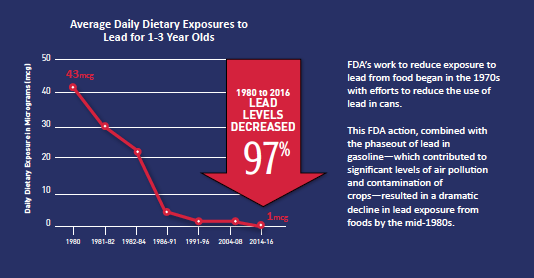
This FDA chart below shows how effective government action can be in banning things like lead paint, gasoline, and lead-soldering of canned food.
And, we have much room to improve. Individual products and certain crops are known to have high lead levels. And, certain age groups are more susceptible, young children in particular. Consumers should have the right to know the lead levels in the products they consume.
How Does ZEGO Control for Lead in Its Products?
At ZEGO, we require lead testing of all ingredients we source that are at risk for elevated lead contamination. If the farmer or supplier doesn’t have access to validated third-party testing that meets our standards, we send a sample to our own third-party lab for testing. ZEGO requires that our products meet or exceed the proposed U.S. FDA baby food standard of no measurable lead at <0.02PPM.
You can see our results for our protein powder, oats, and chocolate on the Food Safety page of our website, or scan the QR code on the back of any of our product packages.
NOTE: This blog was originally published as Part 1 and Part 2. It was edited in March 2024 to combine those two blogs and update the content.
Colleen Kavanagh is the founder and CEO of ZEGO. She has dedicated her life to improving the quality and purity of food, because when people are well nourished and have peace of mind, they make a better world. Her career includes working for former Congressman George Miller, the School Nutrition Association, the California Food Policy Advocates, and her own nonprofit A Better Course. She founded ZEGO in 2013.
ZEGO is the first purity-transparent food company that makes superfood products with traceable transparency for allergens, gluten, and toxins. All products are designed to be safe for most people to eat, regardless of dietary restrictions, such as common allergies, intolerances, sensitivities, or diabetes.
ZEGO’s products include oatmeal, muesli, and protein powder and are gluten free, peanut free, tree nut free, dairy free, soy free, sesame free, glyphosate free, lupin free, and sulfite-free. ZEGO is certified as a B Corp and as a women-owned business (WBENC).
San Francisco, CA
-
Organic Plant Based Protein Powder (15oz bag)$29.99 — or subscribe and save 10%
-
Organic Gluten-Free Muesli: Nut Free Cinnamon Twist (13oz)$9.99 — or subscribe and save 10%
-
Organic Double Protein Oats 5 bag case$39.95 — or subscribe and save 5%
-
Organic Gluten Free Muesli: Apple Cranberry (13oz)$9.99 — or subscribe and save 10%
-
Organic Plant Protein (5 bags, 15 oz each)$129.95 — or subscribe and save 5%
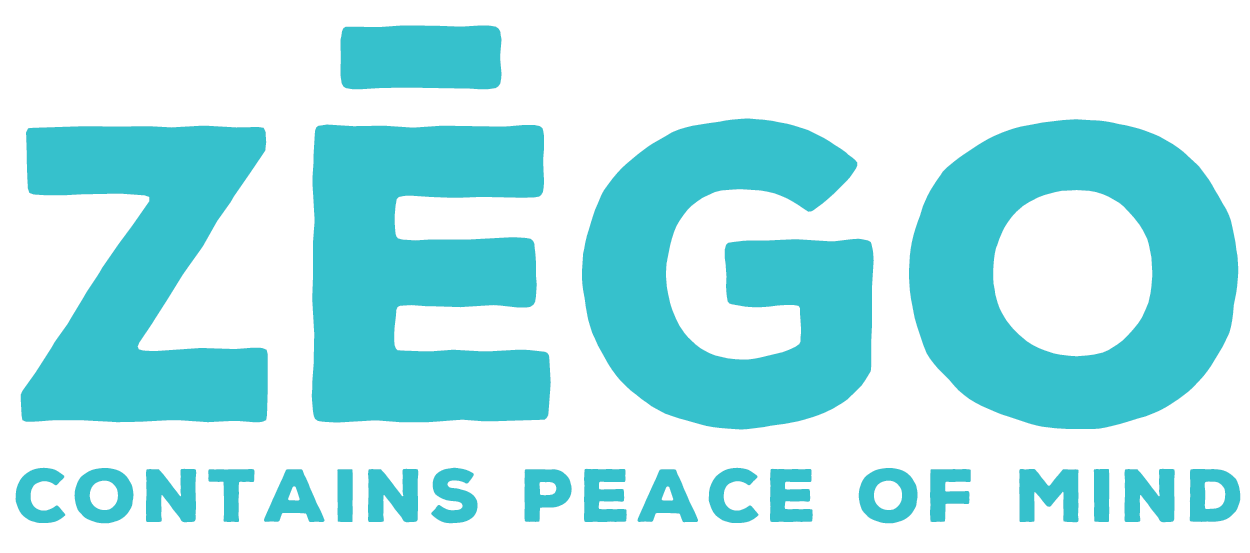
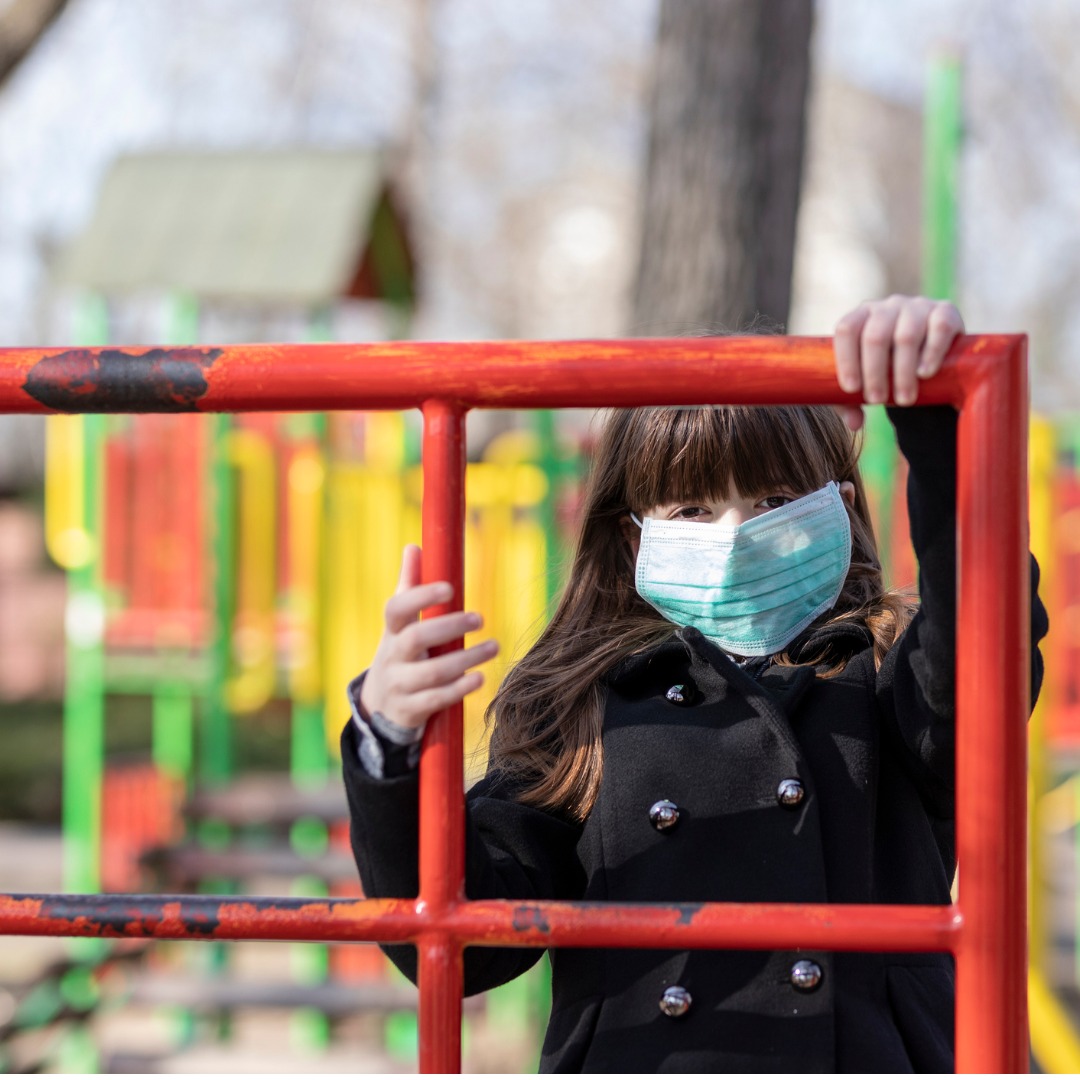
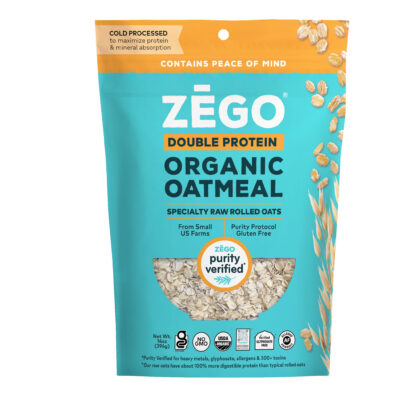
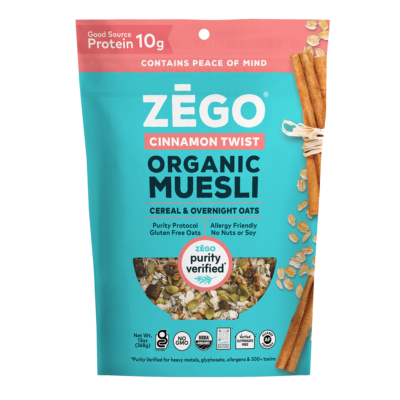
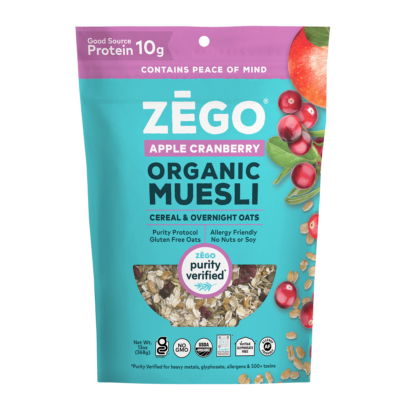
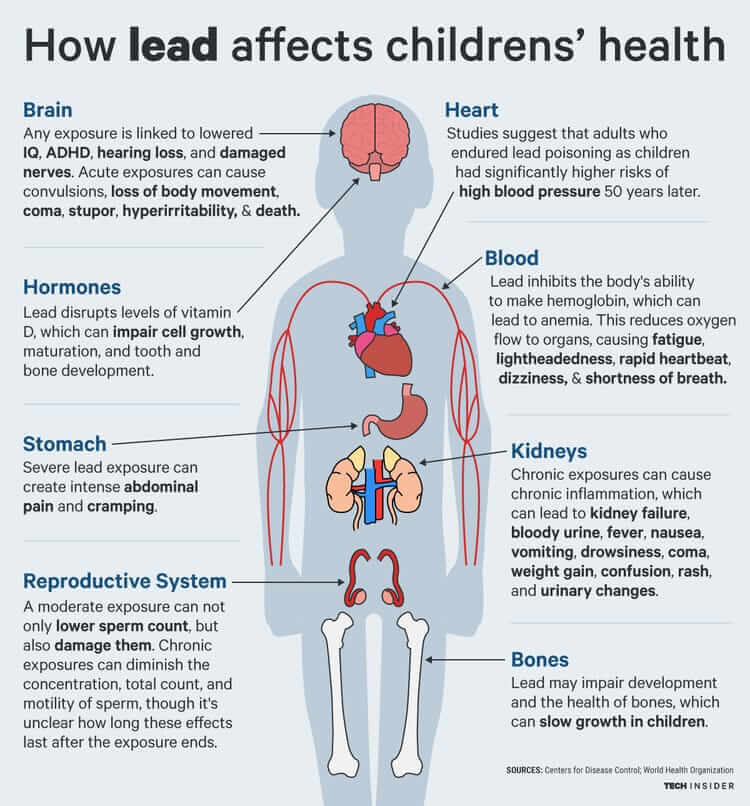
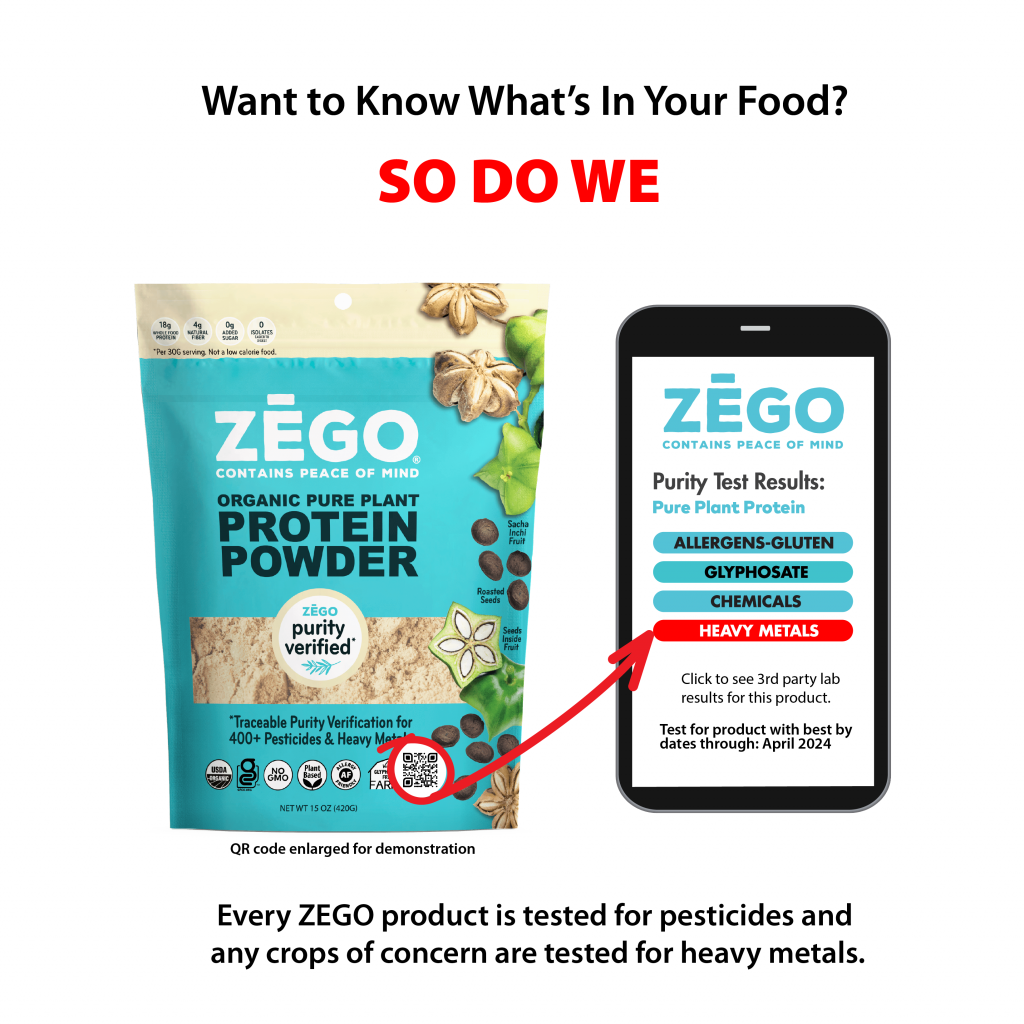
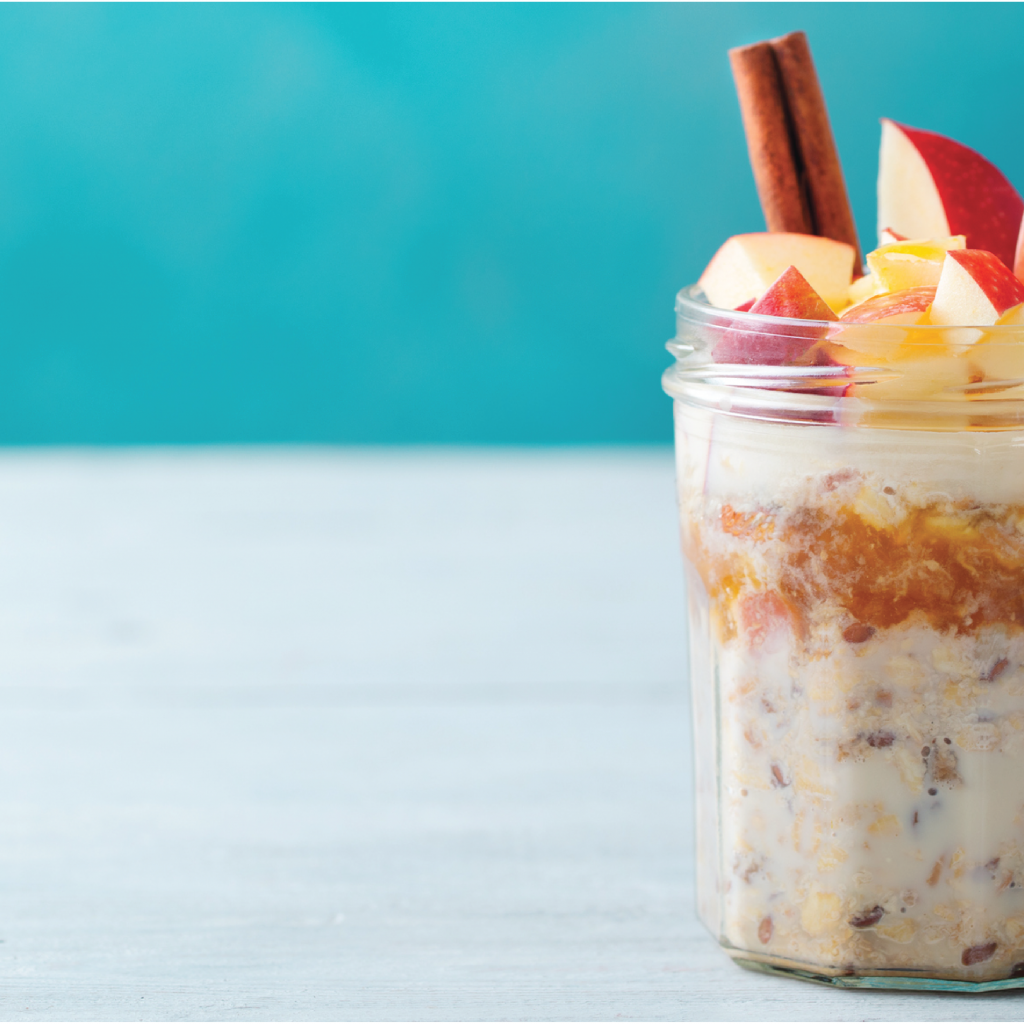
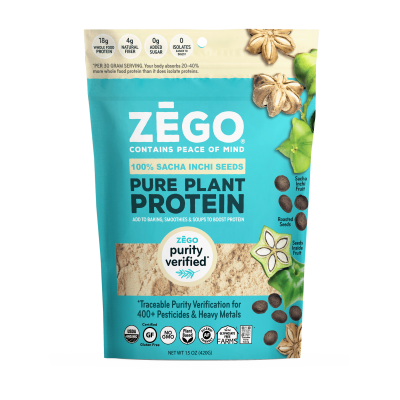
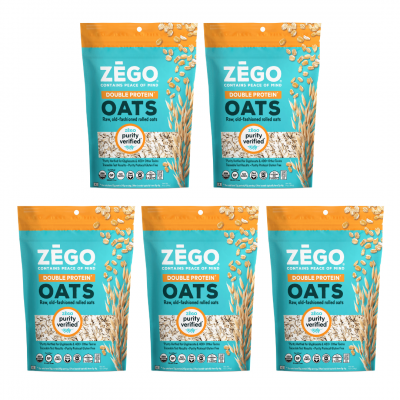
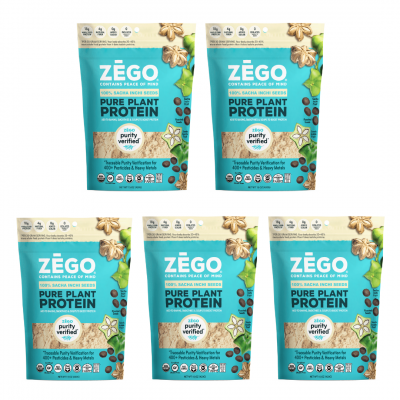
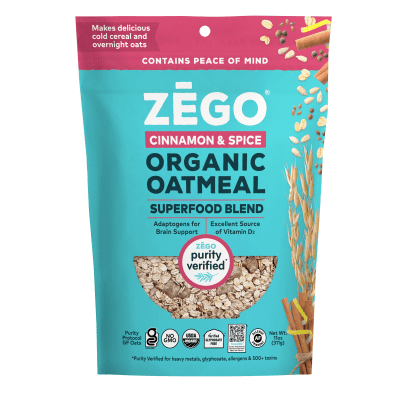
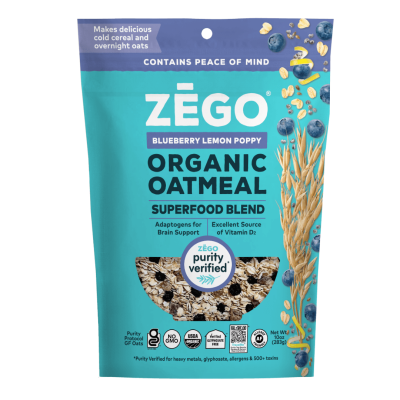
0 Comments for “Minimizing Lead Exposure: How and Why to Avoid Lead in Food”